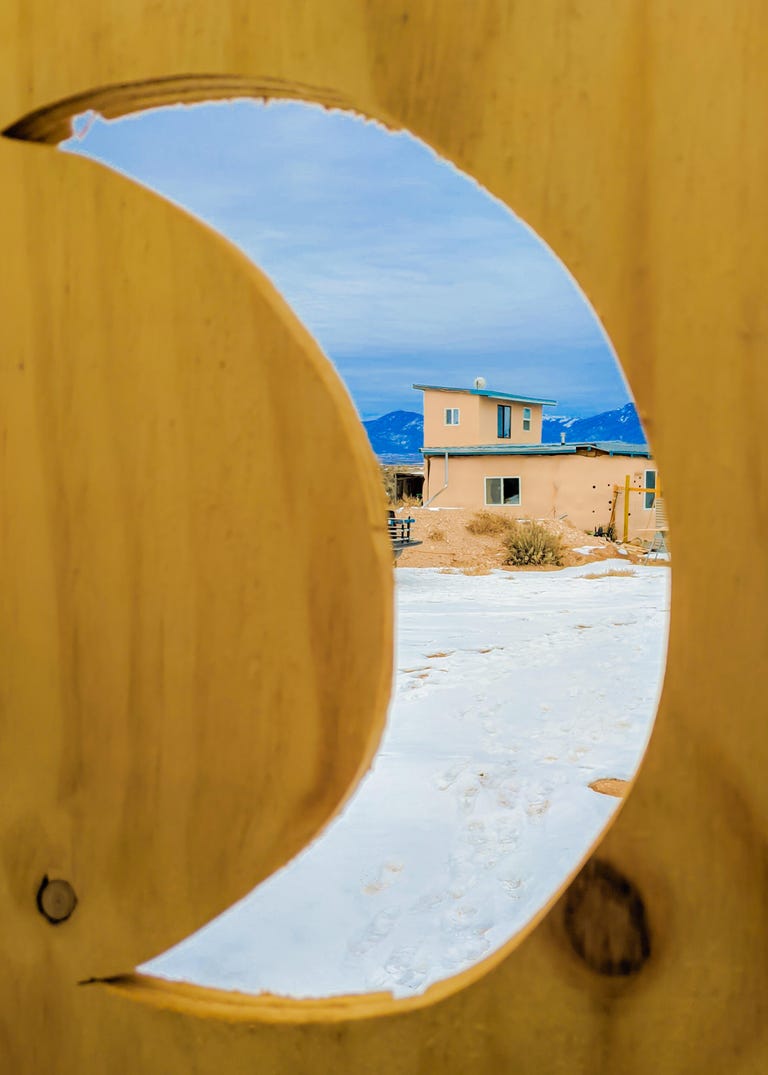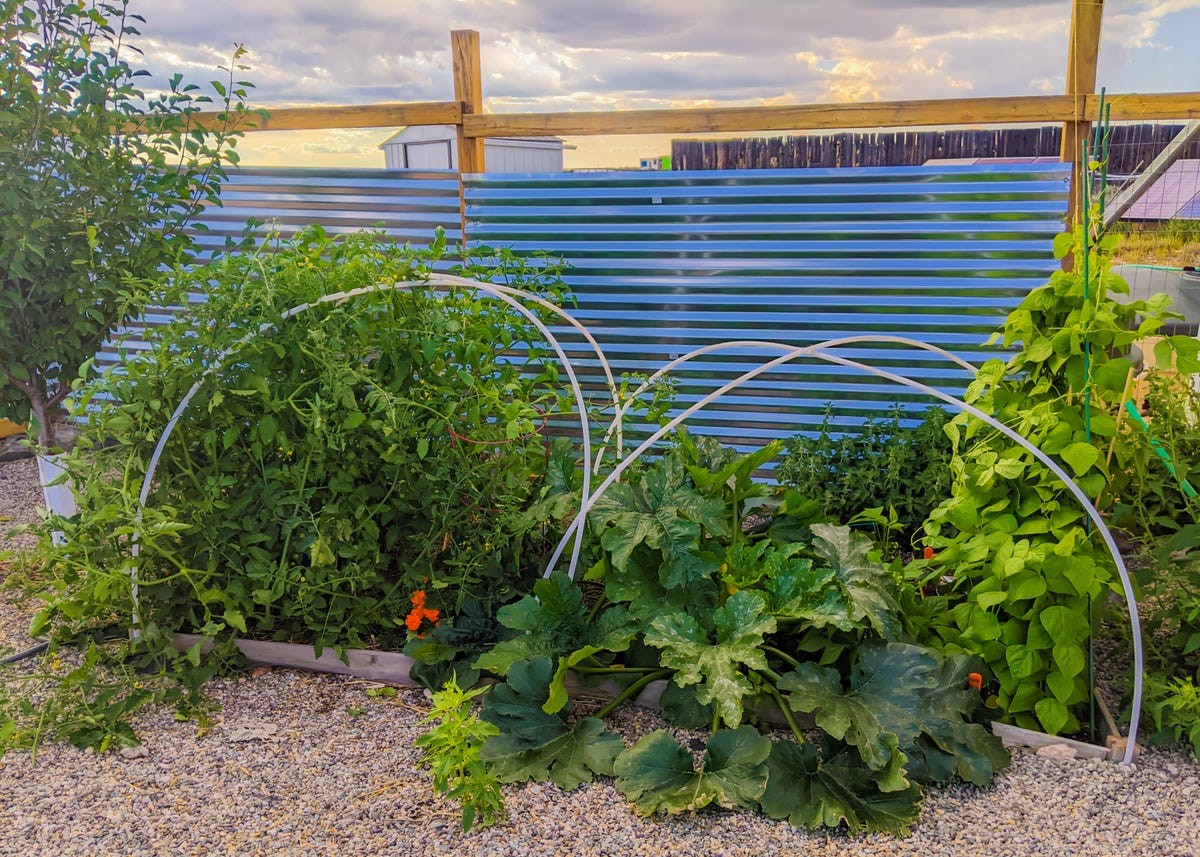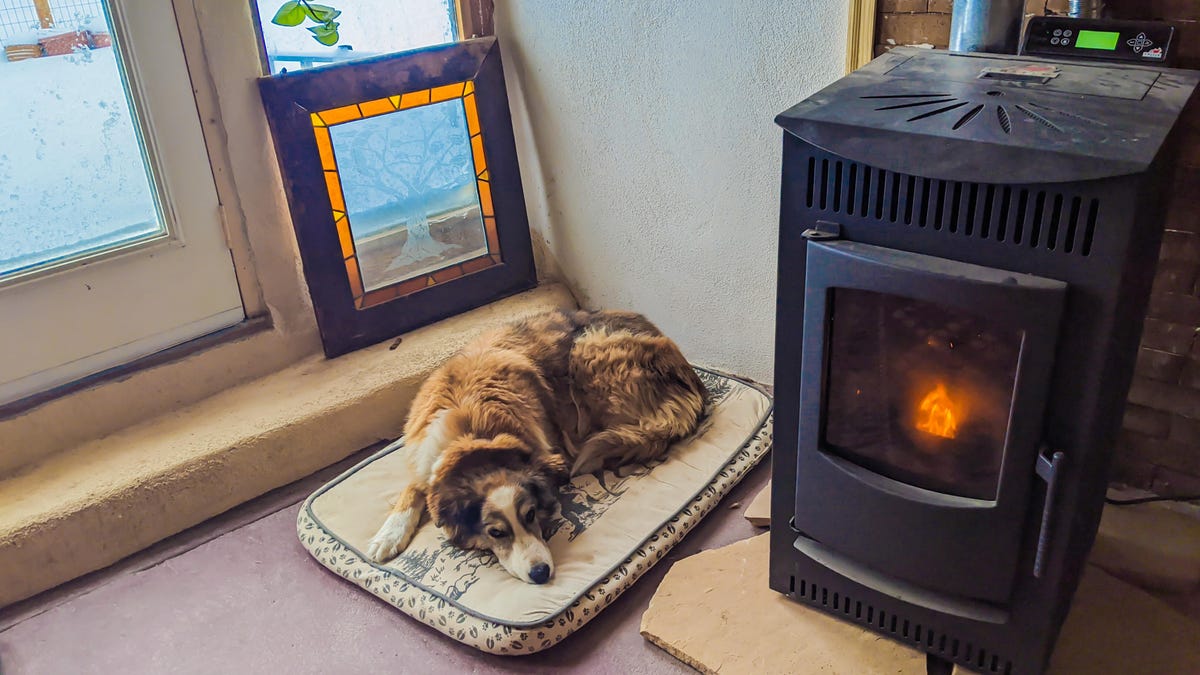It’s remarkable how quickly you become conscious of your water consumption when you can connect each gallon to your own physical effort. I’ve had to restrain myself from nagging my family over showers that seem to go on a few minutes too long.
Living off the grid means committing to sourcing everything you need to survive and thrive independently: food, shelter, energy and most importantly: water. It’s empowering, until the moment things don’t work. Like when you’re halfway through a delightful hot shower at the end of a January day and the water pump suddenly stops working, sending you into the frozen darkness with a wet headful of shampoo and some tools to address the problem.
Eventually, you solve the problem because you have to and you’re on top of the world again, hopefully with some lessons learned to reduce the frequency of mishaps in the future. Slowly, life out here gets easier.
It turns out the biggest challenge of this lifestyle is making the leap to begin with. When I started installing our off-grid electrical and plumbing systems, I very quickly was confronted with my own ignorance of where the resources that sustain my family come from and how they work.
Staying hydrated is job one
The trickiest of these resources is water. We’re in the high desert, atop the Taos Plateau in northern New Mexico. Although the famed Rio Grande runs just a little more than a mile away from our front door, it runs through a gorge 800 feet deep. Drilling a well to reach the water table means pushing a pipe through hundreds of feet of rock. It’s a task somewhere between impractical and impossible.
This makes the water that falls from the sky incredibly valuable here. Laws and other rules about rain catchment vary by state and jurisdiction, so if you’re considering rain catchment in your location, be sure to do your own research.
As in many places, rain doesn’t come in equal amounts from month to month here. Most precipitation comes during the monsoon season each summer. It’s imperative to catch and store as much of that abundance when it comes. This means putting gutters on anything that might catch rain, from the roof of our house to our solar panels to our shed and our patio cover. That water is piped to two huge tanks partially buried in the backyard, which combined hold more than 3,500 gallons.
Rainfall runs through multiple screens on the way into the tank, then again as it’s pumped into the house before finally going through a filter on its way to our taps inside. I’ve had it tested for all kinds of possible contaminants and microbes; it’s about as pure as can be, and without chlorine or any other chemicals.
The last monsoon season filled our tanks almost to the top, lasting us a full six months. By March, the water level was low enough that every week or two I had to haul a few hundred gallons from a community deep well about five miles down the road, via a tank in the back of my pickup truck.

This outhouse faces the sunrise and makes for a reliable second bathroom.
Hauling water is pretty cheap — it costs less than 10 bucks for 200 gallons — but it also takes about an hour out of my day. We made one decision to conserve water that’s also been the major challenge: We opted to forgo a traditional flush toilet in favor of a compost toilet that uses no water.
This actually isn’t as bad as it sounds, most days. Without getting into too many gross details, just know that a bathroom with a compost toilet is actually less stinky than a regular one (once you get the ventilation system dialed in), and it’s better for the environment. However, it requires regular maintenance that isn’t always pleasant, and when anything in the system clogs or leaks, it instantly becomes a really bad day. We now have a routine down that’s relatively painless and prevents catastrophic clogs, but the lessons were learned the hard way.
These difficulties are easily offset by our garden. It’s relatively small, but it’s something of a miracle. We’ve got a burgeoning ecosystem of fruit trees, berries, greens, squash, herbs and more out our back door, thanks to our gray water system. It isn’t going to win any awards but it grows in a brutal environment, where just a handful of species of vegetation outside of sagebrush and tumbleweed thrive on their own.
All our used sink and bath water flows outside into a system I designed and dug myself, of perforated pipes buried in basins full of mulch and garden soil. It’s been more successful than we imagined, and I’m about to dig yet another basin to spread the wet wealth around a bit more.

Recycled gray water sustains the tomatoes, squash, beans and more thriving in this garden.
Pros and cons of producing my own power
Sourcing your own energy is really as simple as tracking down fuel. Gas and a generator gets you all the electricity you need; a wood stove and means of hauling firewood keeps you warm. Plenty of our neighbors take this very minimal approach to living off-grid. One neighbor never hooked up any solar panels, rarely runs his generator and prefers to just exist by “camping,” as he puts it, without taking advantage of electricity for much of anything.
The problem is that generators are often inefficient, loud, stinky and definitely not environmentally friendly. And supplying and running a wood stove can feel like a part-time job, especially in the winter.
So my family opted to let technology simplify things. As I’ve explained elsewhere, solar energy systems appear to function like magic once they’re all set up and running. We decided to reserve a little of that abundant energy sorcery for a wood pellet stove that heats our home. It’s much less labor intensive than burning firewood and cleaner than a gas furnace. When it’s starting up, its electric igniter uses more energy than most other electrical appliances in our home, but it’s worthwhile to us.

A wood pellet stove keeps the off-grid home (and four-legged friends) warm through the winter.
We are reliant on being able to source industrially made pellets, which are subject to supply chain issues, and this is definitely not ideal, especially from the self-reliance perspective. We have a small propane-based backup system for emergencies, and I’m open to the idea of someday swapping out the pellets for a traditional wood stove.
Off-grid life pays off in surprising ways
A lot of the pros of making the off-grid move are well known and rather obvious: utility bills lowered or erased, a greatly reduced environmental footprint and an increased sense of independence.
What I didn’t expect is how taking responsibility for all our basic needs gave me a new understanding and appreciation of how all different kinds of systems work. When you have full visibility into exactly how water gets to your taps and power gets to your outlets, you start to think about all the other unseen systems in our world. It’s almost like X-ray vision. I now grasp what’s actually happening with my bike’s gears or my truck’s brakes after not thinking about it much for decades.
I have to believe that if everyone were forced to set up their own systems to source basic necessities like energy and power, then maybe all our shared systems would work just a little bit better.


















+ There are no comments
Add yours